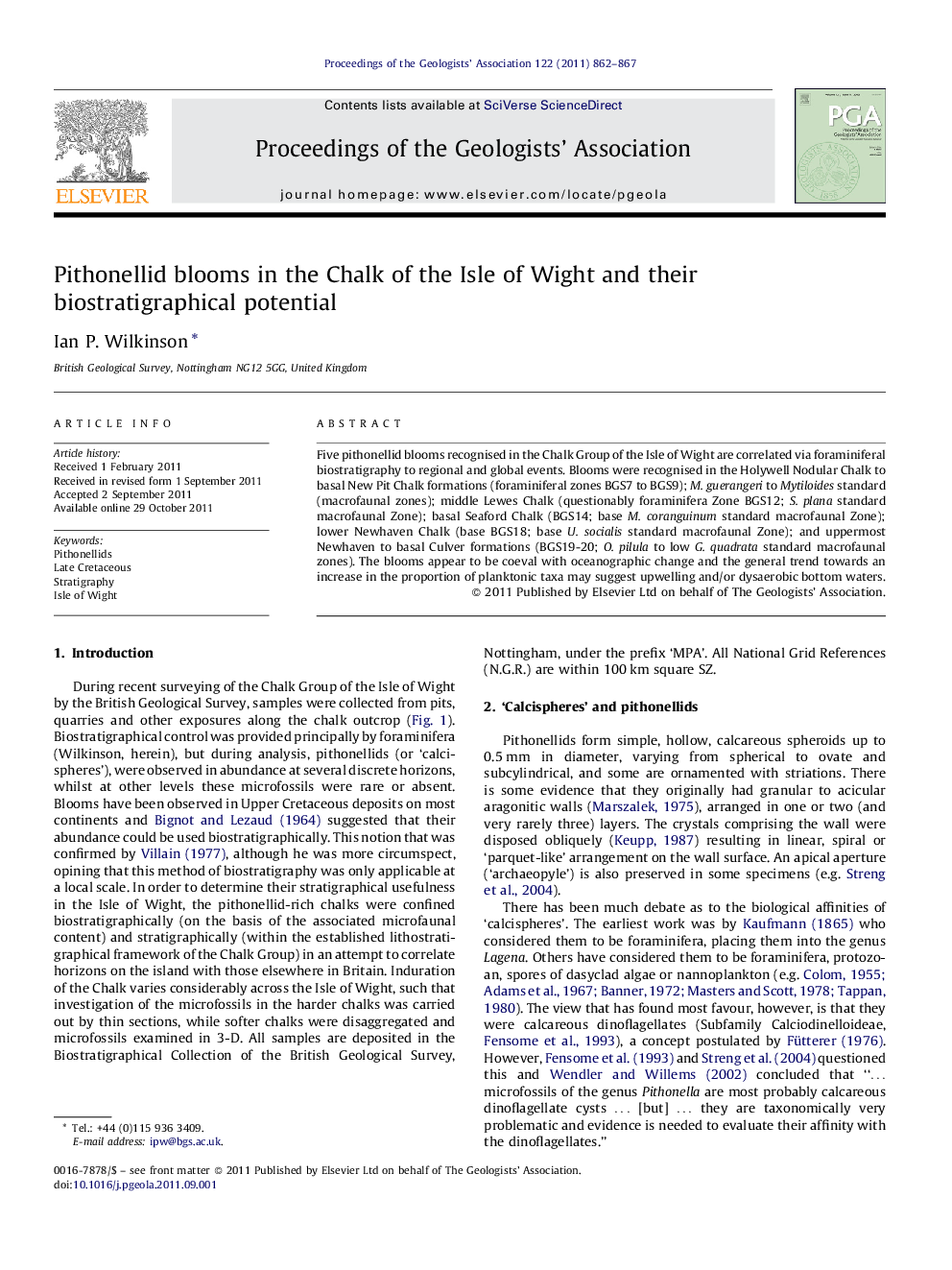| Article ID | Journal | Published Year | Pages | File Type |
|---|---|---|---|---|
| 4734769 | Proceedings of the Geologists' Association | 2011 | 6 Pages |
Five pithonellid blooms recognised in the Chalk Group of the Isle of Wight are correlated via foraminiferal biostratigraphy to regional and global events. Blooms were recognised in the Holywell Nodular Chalk to basal New Pit Chalk formations (foraminiferal zones BGS7 to BGS9); M. guerangeri to Mytiloides standard (macrofaunal zones); middle Lewes Chalk (questionably foraminifera Zone BGS12; S. plana standard macrofaunal Zone); basal Seaford Chalk (BGS14; base M. coranguinum standard macrofaunal Zone); lower Newhaven Chalk (base BGS18; base U. socialis standard macrofaunal Zone); and uppermost Newhaven to basal Culver formations (BGS19-20; O. pilula to low G. quadrata standard macrofaunal zones). The blooms appear to be coeval with oceanographic change and the general trend towards an increase in the proportion of planktonic taxa may suggest upwelling and/or dysaerobic bottom waters.
